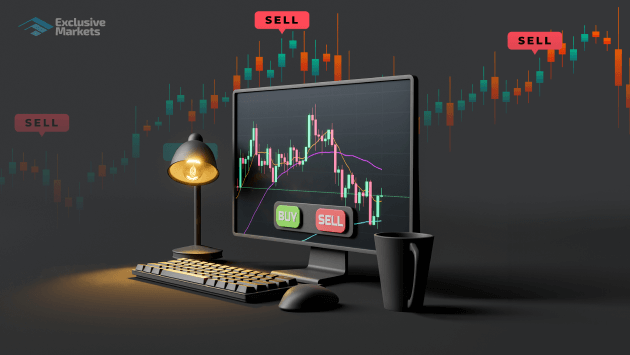
Forex Trading for Dummies: A Beginner’s Guide
Forex trading, or foreign exchange trading, involves the buying and selling of currencies. It can seem intimidating for beginners, but with the right guidance, anyone can learn to navigate the forex market successfully. In this article, we will break down the essentials of forex trading for dummies, including key concepts, strategies, and pitfalls to avoid. For those looking for reliable resources on brokers, you can check out forex trading for dummies Best Uzbek Brokers to jump-start your trading journey.
Understanding the Forex Market
The forex market is the largest financial market in the world, with a daily trading volume exceeding $6 trillion. Unlike traditional stock markets, forex operates 24 hours a day, five days a week, allowing traders to execute trades anytime. The primary aim of forex trading is to profit from fluctuations in exchange rates between currencies. For example, if you believe the euro will strengthen against the US dollar, you might buy euros with dollars, hoping to sell the euros later for a profit.
Key Concepts in Forex Trading
Currency Pairs
Currencies are traded in pairs, with the first currency in the pair being the base currency and the second the quote currency. The exchange rate indicates how much of the quote currency is needed to purchase one unit of the base currency. For instance, in the EUR/USD pair, if the exchange rate is 1.20, it means 1 euro is equal to 1.20 US dollars.
Pips and Lots
A pip (percentage in point) is the smallest price move that a given exchange rate can make based on market convention. For most currency pairs, a pip is typically the fourth decimal place (0.0001). Trading occurs in lots, which are standardized quantities of currency. A standard lot is 100,000 units, a mini lot is 10,000 units, and a micro lot is 1,000 units.
Leverage
Forex trading is often conducted using leverage, which allows traders to control larger positions with a smaller amount of capital. For example, with a leverage ratio of 100:1, a trader can control $100,000 with just $1,000 in their account. While leverage can amplify profits, it also increases risk, as losses can exceed the original investment.
Choosing a Forex Broker

Selecting the right broker is crucial for success in forex trading. Consider factors such as regulatory compliance, trading platform features, fees, spreads, and customer service. Ensuring that a broker is regulated by a credible authority adds an extra layer of security, protecting your funds and ensuring fair trading conditions.
Basic Trading Strategies for Beginners
Scalping
Scalping is a short-term trading strategy where traders aim to make small profits from minor price fluctuations. This method requires quick decision-making and the ability to manage multiple trades simultaneously. Scalpers usually hold trades for a few seconds to a few minutes, capitalizing on small market movements.
Day Trading
Day trading involves buying and selling currency pairs within a single trading day. Day traders typically seek to capitalize on short-term price movements and close all positions before the market closes to eliminate overnight risk. This strategy requires a solid understanding of market trends and technical analysis.
Position Trading
Position trading is a long-term strategy where traders hold onto their positions for weeks or even months, relying on fundamental analysis to make their decisions. This approach requires less frequent trading and is suitable for those who prefer a more hands-off strategy.
Essential Tips for Forex Trading Success
Set a Trading Plan
A well-defined trading plan outlines your goals, risk tolerance, and trading strategies. It serves as a guide to keep you focused and disciplined, helping you avoid emotional decisions during trading.
Practice with a Demo Account

Before committing real money, practice trading using a demo account. Most brokers offer demo accounts where you can trade with virtual money, allowing you to familiarize yourself with the trading platform and test your strategies without financial risk.
Stay Informed
Keep up with market news and economic indicators that can affect currency prices. Understanding the factors influencing currency movements, such as interest rate changes, political events, and economic data releases, will help you make informed trading decisions.
Common Mistakes to Avoid
Overleveraging
While leverage can increase profits, it can also magnify losses. New traders often underestimate the risks associated with high leverage, leading to significant account drawdowns. It’s essential to use leverage cautiously and understand the potential impact on your trading capital.
Neglecting Risk Management
Effective risk management is crucial for long-term trading success. Set stop-loss orders for every trade to limit potential losses and avoid risking more than 1-2% of your trading capital on any single trade.
Emotional Trading
Trading based on emotions, such as fear or greed, can lead to poor decision-making. Stick to your trading plan and remain disciplined to mitigate emotional influences on your trading performance.
Conclusion
Forex trading offers numerous opportunities for profit, but it comes with inherent risks. By understanding the basics, developing a sound trading strategy, and adhering to effective risk management techniques, even beginners can achieve success in the forex market. Remember to continually educate yourself, stay informed, and practice diligently. With dedication and the right mindset, you can navigate the world of forex trading effectively.
